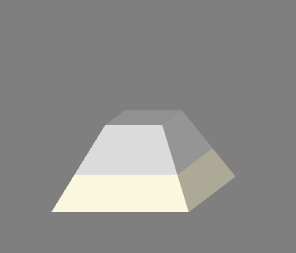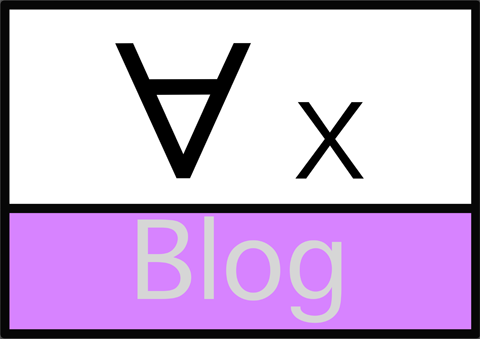Alex Newsletter # 1
January 2013
TranslationMiB, Kio, TB, Po and Mbit/s
How to measure the storage
When the SI standard catches the Techies

Newbie
Basic concept to know.
Since the origin of computer, it is a matter of 0 and 1, the reference unit is then bit (symbole b for binary unit). For convinience we have grouped them by 8 that form a Byte in English (symbole B) or an octet (symbole o) in French. Then we can combine them by the power of 2, and 210 = 1024, which is slighty different from 1000 = 103, by a practical approximation, computer have the following equivalence 1024 B = 1 kB, the difference is small only 2,4%.
At that time between 1975 and 1985, the memory capacity of computer is calculated in kilobytes (KB) and disk capacity in megabytes (MB) (where 1 MB = 1024*1024 bytes).
In 1987, with the IBM PS/2, first confusion of units with the 1.44-MB diskette which in fact contains 1.44*1000*1024 bytes (2 sides of 80 tracks of 15 sectors of 512 bytes each).
However with the increase in volumes handled by computer systems, the difference did not remain constant but became increasingly important. So for system administrator, 1 TB corresponded to 1024*1024*1024*1024 bytes or 1,099,511,627,776 bytes, which corresponds to an error of about 10 %.
So hard disk sales companies have slightly added a small line at the bottom of their business proposals:
(1) We will take 1 MB = 106 B, 1 GB = 109 B, 1 TB = 1012 B
Causing a few surprises to inattentive system administrator because depending on the importance of its purchase of equipment it would lack 5, 7.5 or 10% of material in relation to their needs.
In trade, at the sight of these clarifications we can say :
Disk sellers when proposing 250, 320 or 400 GB discs, as defined in the standard, it is really hard discs of 250, 320 or 400 GB formated.
Memory sellers when proposing 256, 512 or 1 GB memories, as defined in the standard, it is in fact memories of 256, 512 or 1 GiB fully available for use.
For the LAN or SAN flow rates, they are 10 or 100 Mb/s (ou Mbps), 1, 2, 4, 8 ou 10 Gb/s.
For the backup means, flow rates are 10, 20, 50, 100 even 160 MB/s.
For customer flows are in GB/h or TB/hr.
So for a network flow found at 50 Mb/s the restoration throughput flow would be 22.5 GB/hr and therefore 22 hours 15 minutes would be needed to restore 500 GB and 23 hours 55 minutes for 500 GiB

Advanced
For those who want to go further.
Also since the year 1998, some standards organizations have studied the following problem: to reconcile the cultural habit of IT with the rigor and accuracy of the international metric system, resulting from the work of scientists from the French revolution. And in 2000, finally, an agreement was defined by the IEC (International Electrotechnical Commission) and IEEE (Institute of Electrical and Electronics Engineers). It was then endorsed by the BIPM (International Bureau of Weights and Measures named in French : Bureau International des Poids et Mesures) and integrated as a standard gloss on multiple and submultiples of SI unit.
In the context of the standardization of computer units, consistent with the SI (International System), IEEE, IEC and the BIPM have redefined units commonly used for computer, that is KB, MB , GB, TB … and have defined new units, which are KiB, MiB, GiB, TiB …
Ainsi dorénavant :
1 kilobyte = 1 kB = 1 000 B = 103 B
1 megabyte = 1 MB = 1 000 000 B = 106 B
1 gigabyte = 1 GB = 1 000 000 000 B = 109 B
1 terabyte = 1 TB = 1 000 000 000 000 B = 1012 B
1 petabyte = 1 PB = 1 000 000 000 000 000 B = 1015 B
As with any other metric units.
But to satisfy the generation of system administrators grown up outside of the metric system, units from the binary system were defined in order to distinguish them once and for all.
And now:
1 kibibyte = 1 KiB = 1 024 B = 210 B = 1 kB + 2,4 %
1 mebibyte = 1 MiB = 1 048 576 B = 220 B = 1 MB + 4,9 %
1 gibibyte = 1 GiB = 1 073 741 824 B = 230 B = 1 GB + 7,4 %
1 tebibyte = 1 TiB = 1 099 511 627 776 B = 240 B = 1 TB + 10 %
1 pebibyte = 1 PiB = 1 125 899 906 842 624 B = 250 B = 1 PB + 12,6 %
kibi prefix meaning kilobinary… these are now recognized and can be used for the following computer units bit (b), octet (o) and byte (B), but their use is also designed for the biomedical field.
Today few computer systems have tools and commands respecting this standard, some commands like ls and df do it partialy:
ls -alhgive the file size in powers of 2
df -hgive the size of the hard discs in powers of 2

Expert
More advanced knowledge that can surprise even an expert.
Some exceptions in this binary world …
One of the first calculating machines, also built entirely of wood, by Thomas Fowler in 1840, working on a ternary base. The unit was then the trit who took the values 0, 1 and 2.
Only 2 computer families were designed with electronic ternary: Setun in the 1950s in Moscow State University and Setun-70, as its name suggests in the 1970s.
Just as we no longer works in base 2 in the binary system there is the base 9 (or nonary), based on 2 trits or base 27 (or septemvigesimal), based on 3 trits which are often used as well as octal (base 8) combining 3 bits and hexadecimal (base 16) combining 4 bits (also called nibble or nybble) are used instead of the binary system.
Some ternary computer as the Setun have defined the tryte, word of 6 trits, similar to the byte (combining 8 bits) for the binary world.
Exemple pour le nombre décimal 26
|
Binary |
Ternary |
Balanced Ternary |
|
Octal |
Nonary |
Meaning |
|
Hexa |
Base 27 |
With the arrival in a future day of optical computers, ternary systems could see daylight again. The memory state is then either turned off to 0 and two orthogonal polarizations of light to 1 and -1. In this case, we speak of balanced ternary coded 0, 1 and T to -1.
And that's not all, with quantum or photon computers units are then qubit ou qbit, or more the qutrit or qtrit, where the qbit has not a value of 0 or 1, but a probability of value of 0 or 1.
